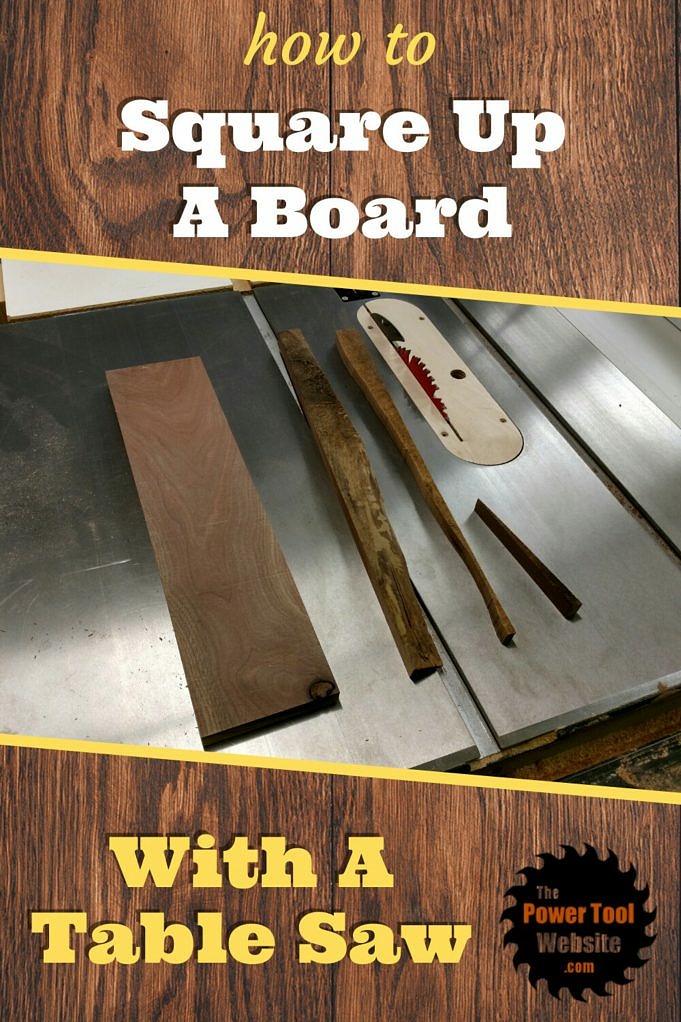A good skill for any woodworker, carpenter or craftsman is the ability to straighten aboard. Although a table saw is the most useful tool, it can be difficult to master. This blog will show you how to use a table saw to straighten a piece of wood. You can make perfectly straight boards with just a few tricks and tips. Let’s get started!
How Do You Straighten A Board From A Table Saw?
Straightening aboard is an essential skill for any woodworker or carpenter. Although a table saw is the most useful tool, it can be difficult to master. You can make perfectly straight boards with a few tricks and tips. Here’s how it works:
First, make sure your table saw is properly set up. The blade should align with the miter slots on the table. The fence should also be parallel to it. It will be difficult to make straight cuts if your saw is not properly set up.
The next step is to select the right blade for your job. You can use any standard carbide-tipped blade, but you might need a specialty blade, such as a crosscut or rip blade, if you are cutting hardwood.
After your saw has been set up and the blade is installed, it’s time to begin cutting. Always use a safety device such as a push stick to protect your blade when cutting boards. Begin by moving the board slowly into the blade. Then increase the speed as necessary.
When you are cutting, pay attention to the fence to ensure that it is parallel to your blade. Stop the saw if the fence begins to move and make any necessary adjustments.
Always inspect your cuts for signs of deviation. Any deviation, even the smallest, can lead to problems later on. It is important to take your time and do the job right. You will be able to use a table saw to straighten boards with a little practice.
There Are Many Ways To Straighten A Board At A Table Saw.
There are many ways to straighten a table saw board. Each one has its own advantages and disadvantages. These are the most popular methods:
1. Straight-line rip cuts are the fastest and easiest way to straighten your board. This method involves ripping the board along its length while keeping the fence parallel with the blade. This method has a disadvantage: it is difficult to maintain the board straight while cutting. It is also easy to make the cut too deep.
2. Crosscuts: The crosscut method is similar to the straight-line rip, except that instead of ripping the board you slice it across its width. Although this method is slower than straight-line rip cuts, it’s much more precise and has a lower chance of making mistakes.
3. Miter cuts: This is a method to make angled cuts and can also be used for straightening a board. You set the miter gauge at the desired angle, and then cut. This method is accurate but slow.
4. Jointing: This method is the fastest and most precise way to straighten a wooden board. However, it can also be the most time-consuming. This method involves using a jointer to straighten a board’s edge. This method has a drawback: it can be difficult to straighten the boards perfectly and requires specialized equipment.
Each method has its pros and cons, so it’s up to you which one suits your needs the best.
What Are Some Of The Advantages Of Straightening A Piece Of Wood On A Table Saw?
Straightening a board using a table saw has a few advantages.
1. Accuracy: A table saw can straighten a board. This ensures that the cut is precise and accurate. This is critical in projects that require precision, such as woodworking or cabinet making.
2. Safety: A table saw is safer than hand-held powersaws for straightening boards. You are less likely to cut yourself accidentally when you use a table saw.
3. You can save time by using a table saw to straighten boards, especially if you are working on a large job. A table saw is faster than hand-held powersaws.
4. Versatility: The table saw has a greater versatility than other power saws and can be used for many different tasks. It is a useful tool for woodworkers.
How To Use An Iron To Straighten A Board.
A jointer can be used to straighten the edges of boards. The jointer works by removing small amounts from the board’s edge. It can also be used to create straight edges or curves. This is how to use a jointer for straightening a board.
1. Adjust the jointers fence to your desired width.
2. Place the board on the table, aligning the edges with the jointers blade.
3. Slowly move the board through the blade. Make sure the edge is flush with the fence.
4. Continue this process until you reach the edge of your board.
5. To remove burrs and rough spots, sand the edges of the board.
What Is The Difference Between Using A Jointer And A Table Saw To Straighten Boards?
There are some key differences in using a jointer to straighten boards and a table saw.
1. A jointer is faster than a tablesaw, but it’s more precise.
2. Although a table saw is quicker than a jointer it’s less precise.
3. A jointer needs specialized equipment while a tablesaw does not.
4. A jointer can create straight or curved edges, while a tablesaw can only create straight edges.
5. A jointer costs more than a table saw.
Conclusion:
The type of equipment and your needs will determine which method you choose. A jointer is best if accuracy is important. If speed is important, however, a table saw might be the best choice.



